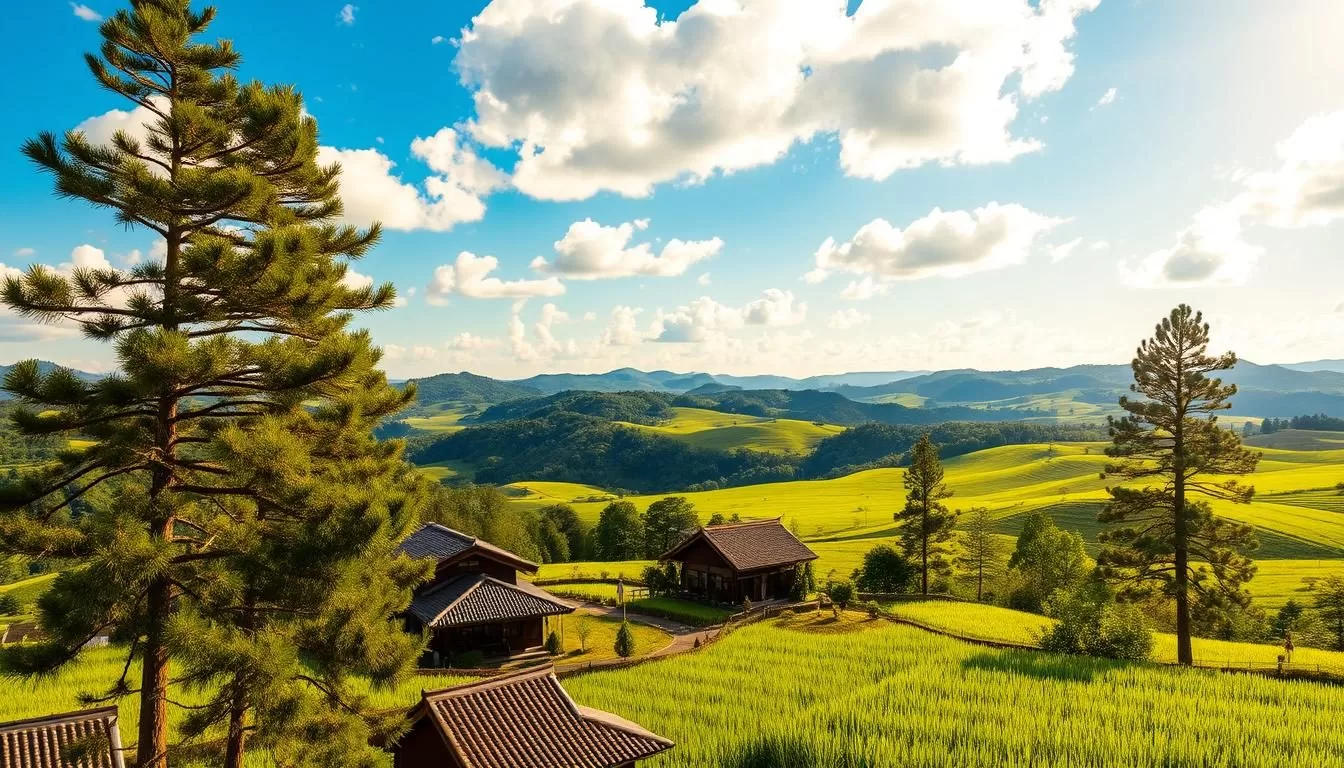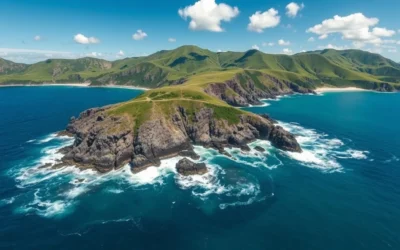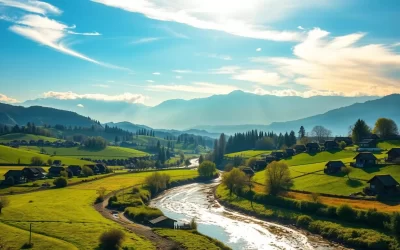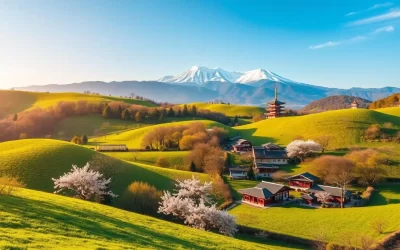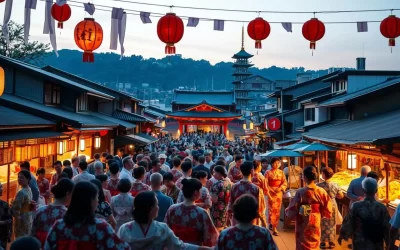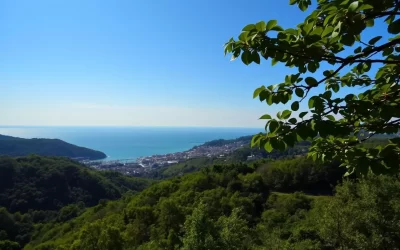Planning a trip to Saga Prefecture requires understanding its unique weather patterns to make the most of your visit. Located on Kyushu Island, Saga experiences a distinct climate influenced by its coastal location.
You’ll enjoy a complete experience of Japan’s four distinct seasons, each with its own charm and attractions. To avoid potential weather-related disruptions, it’s crucial to time your visit according to your preferences for activities, festivals, and comfortable weather conditions.
Whether you’re interested in cultural experiences, outdoor adventures, or simply enjoying the natural beauty of the region, understanding the seasonal weather will help you pack appropriately and plan activities that maximize your enjoyment.
Understanding Saga Prefecture’s Climate
Understanding the climate of Saga Prefecture is crucial for planning a trip that suits your preferences. The prefecture’s unique geography and location in Japan contribute to its diverse weather patterns.
Geographic Location and Weather Patterns
Saga Prefecture’s climate is influenced by its proximity to the ocean and its position on the island of Kyushu. This geographic location results in a temperate climate with seasonal variations. Japan’s climate varies significantly across its four main islands, and Saga is no exception, experiencing a mix of weather conditions throughout the year.
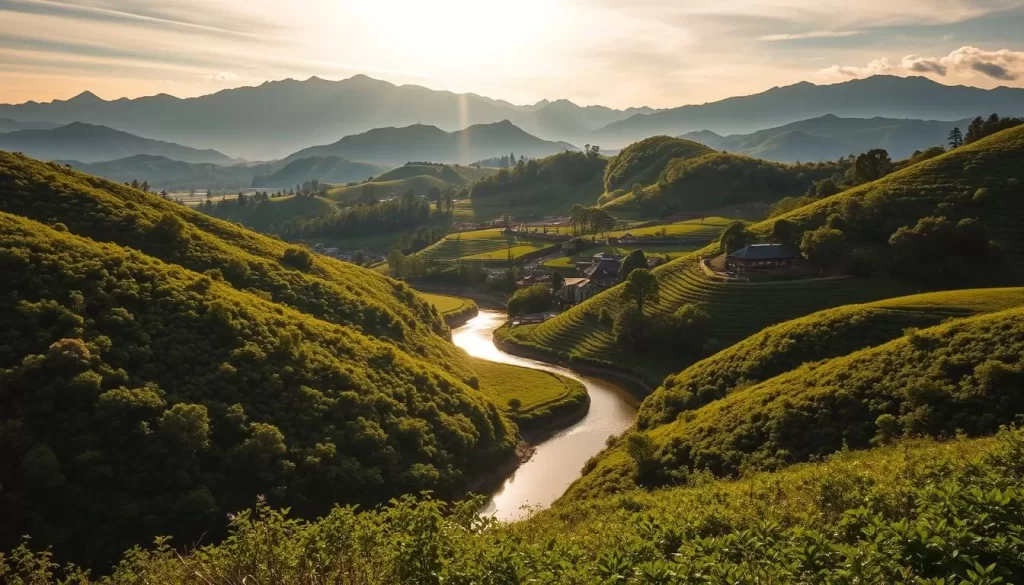
Four Distinct Seasons in Saga
Saga Prefecture experiences four well-defined seasons, each offering unique experiences and attractions. Here’s a brief overview:
- Spring (March to May) brings mild temperatures and the famous cherry blossoms, transforming Saga into a picturesque landscape.
- Summer (June to August) is characterized by hot and humid weather, with temperatures often exceeding 85°F (30°C), but it’s also a time of vibrant festivals and outdoor activities.
- Autumn (September to November) offers comfortable temperatures and stunning fall foliage, with maple and ginkgo trees turning brilliant shades of red, orange, and yellow.
- Winter (December to February) in Saga is relatively mild, with average temperatures around 50°F (10°C), making it comfortable for exploring cultural sites and enjoying seasonal illuminations.
Each season in Saga has its own charm, from the delicate beauty of spring to the vibrant energy of summer, the colorful splendor of autumn, and the serene atmosphere of winter. Understanding these seasonal characteristics will help you choose the best time to visit based on your preferences for weather, crowds, and seasonal attractions.
Spring in Saga: Cherry Blossoms and Mild Weather
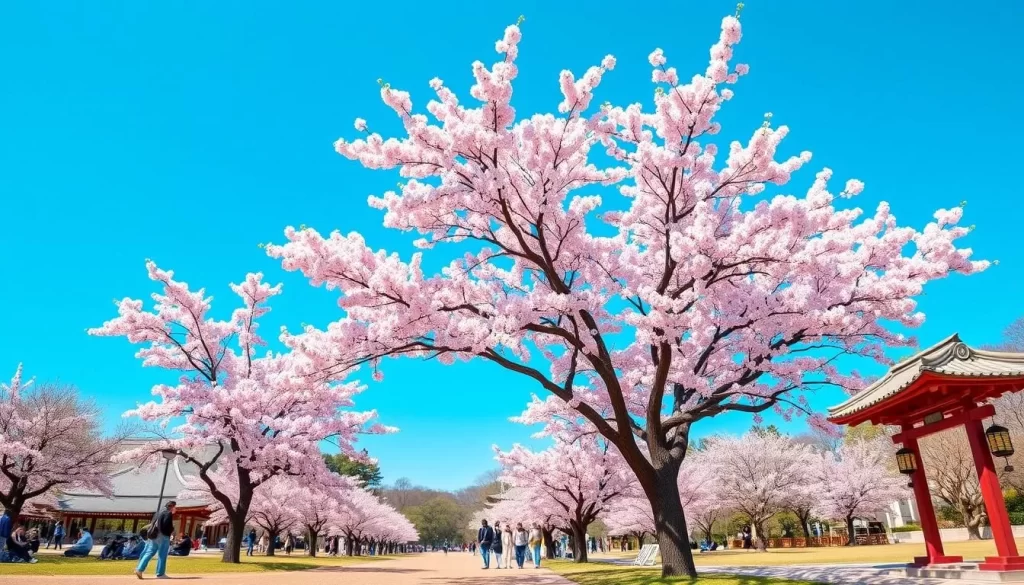
As spring unfolds, Saga Prefecture transforms into a vibrant landscape of cherry blossoms and mild weather. You can enjoy the beauty of the season by exploring the various places that showcase the prefecture’s natural and cultural attractions.
March to May Weather Overview
From March to May, Saga experiences a gentle transition from spring to early summer, characterized by mild temperatures and increasing sunshine. You can expect a pleasant time to visit various outdoor attractions without the crowds.
Spring Festivals and Events
Spring in Saga is marked by numerous festivals and events that celebrate the season. You can participate in the activities and enjoy the local culture, including the cherry blossom viewing parties at popular spots like Saga Park and Mifuneyama Rakuen.
Best Spring Activities in Saga
During the spring, you can enjoy a variety of activities such as cycling along the Saga Plain, visiting the historic hot spring town of Ureshino, and hiking in the Tara Mountains. The cherry blossoms are a major highlight, with many scenic spots along the Kase River and in the pottery villages of Arita, Imari, and Karatsu. You can also take a boat tour along the Chikugo River to admire the cherry trees and blossoms from a different perspective.
Summer in Saga: Festivals, Heat, and Humidity
Experience the essence of Saga Prefecture during summer, with its colorful festivals, events, and pleasant activities. As you explore the region, you’ll discover a blend of traditional culture and summer fun.

June to August Weather Conditions
Summer in Saga Prefecture is characterized by hot and humid weather, with temperatures often reaching their peak in July and August. You can expect a significant amount of sunshine during these months, making it ideal for outdoor activities.
Navigating the Rainy Season
Although summer is generally warm, Saga Prefecture experiences a rainy season in June, known as “Tsuyu” or “Baiyu.” During this period, you should be prepared for occasional rain showers and potential flooding. Staying informed about weather forecasts will help you navigate this season smoothly.
Summer Attractions and Events
Summer in Saga is marked by vibrant summer festivals and events that showcase the region’s cultural heritage. You can enjoy the Karatsu Kunchi Festival, featuring elaborate floats and traditional performances, or visit the Arita Porcelain Market to purchase high-quality ceramics. The Saga Castle Fireworks Festival is another highlight, with thousands of fireworks lighting up the night sky. Additionally, you can indulge in traditional summer foods like kakigōri and cold somen noodles, or visit the evening beer gardens that pop up throughout Saga’s cities.
Autumn in Saga: Colorful Foliage and Comfortable Temperatures
Autumn in Saga is a treat for the senses, with comfortable temperatures and breathtaking foliage that make it an ideal time to visit. You can enjoy the vibrant colors of the changing leaves, explore the prefecture’s natural beauty, and experience its cultural heritage.
September to November Weather Patterns
From September to November, Saga Prefecture experiences a gradual cooling of temperatures, ranging from 15°C to 25°C (59°F to 77°F), making it perfect for outdoor activities. The autumn weather is generally mild and pleasant, ideal for hiking, visiting temples, and enjoying local harvest festivals.
Fall Harvest Festivals
Saga’s autumn is not just about the foliage; it’s also a time for harvest festivals that celebrate the season’s bounty. You can participate in local events, savor seasonal foods like Japanese sweet potatoes (Beni-Imo) and hotpot (nabe), and immerse yourself in the community’s festive spirit.
Best Autumn Viewing Locations
Saga offers numerous spectacular locations for viewing autumn foliage. Some of the top spots include Mifuneyama Rakuen in Takeo, known for its over 200 maple trees; Nanatsugama Limestone Caves area for its unique geological formations amidst vibrant fall colors; and Kase River Park in Saga City, featuring a promenade lined with ginkgo trees turning golden yellow.
Winter in Saga: Mild and Dry with Occasional Snowfall
Saga Prefecture’s winter season is characterized by its mild and dry climate, punctuated by occasional snowfall, making it an attractive destination for those seeking a less crowded winter experience. You can enjoy a serene winter landscape, participate in unique celebrations, and experience the local culture without the peak season crowds.
December to February Weather Overview
During the winter months, Saga Prefecture experiences cool temperatures, with average highs ranging from 10°C to 12°C (50°F to 54°F). The region sees very little rainfall during this period, and while snow is not common, it can occur, adding a touch of magic to the landscape. You should pack layers for your visit, as the temperature can drop significantly at night.
Winter Illuminations and New Year Celebrations
Winter in Saga is not just about the weather; it’s also a time for beautiful illuminations and significant celebrations. The Saga Light Fantasy is a highlight, with millions of LED lights transforming Saga City into a vibrant spectacle from November through January. You can also experience the traditional New Year (Shogatsu) celebrations, visiting shrines and temples, and enjoying local osechi ryori, traditional New Year foods.
| Event | Description | Location |
|---|---|---|
| Saga Light Fantasy | Millions of LED lights illuminate the city | Saga City |
| New Year (Shogatsu) Celebrations | Traditional first shrine visit of the year (hatsumode) | Saga’s shrines and temples |
| Winter Illuminations at Mifuneyama Rakuen | Light installations highlighting the garden’s natural features | Mifuneyama Rakuen |
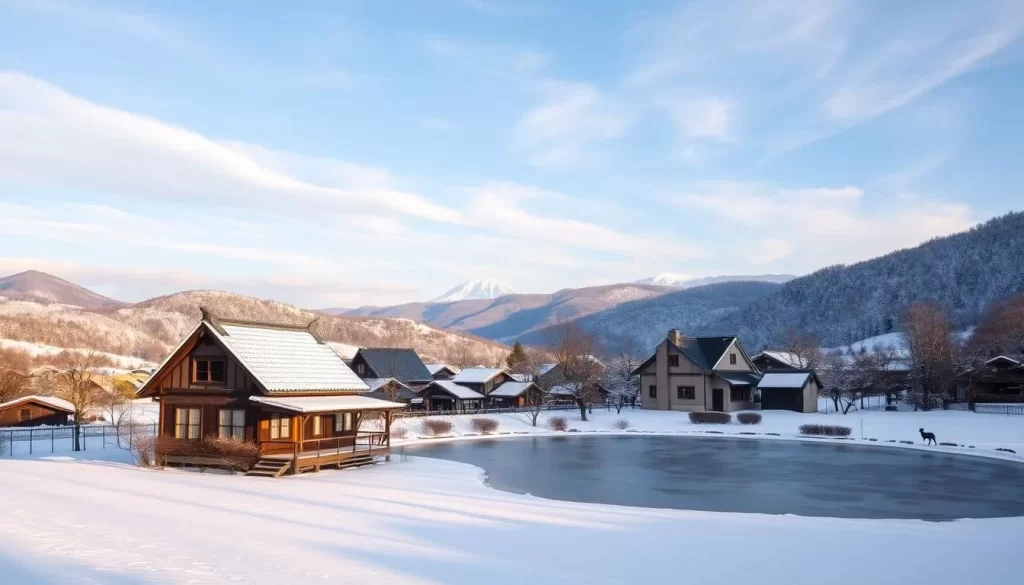
As you visit Saga during the winter, you’ll find that the prefecture’s hot spring resorts, such as those in Ureshino and Takeo, become especially appealing, offering a unique experience of soaking in therapeutic waters amidst the winter scenery. Whether you’re interested in cultural experiences, natural beauty, or simply enjoying the season, Saga Prefecture has something to offer during the winter months.
Saga Prefecture, Japan: Best Months for a Weather-Savvy Trip
When planning your trip to Saga Prefecture, timing is everything to ensure a weather-savvy and enjoyable journey. Understanding the best months to visit can make a significant difference in your experience.
Ideal Months for Outdoor Activities
The best time for outdoor activities in Saga Prefecture is during the spring (March to May) and autumn (September to November). These periods offer mild temperatures and comfortable weather conditions, ideal for hiking, cycling, or simply exploring the prefecture’s natural beauty. In spring, the cherry blossoms bloom, while autumn brings vibrant foliage.
Best Time for Cultural Experiences
For cultural experiences, consider visiting during the spring festivals or autumn harvest events. Golden Week, which takes place from April 29 to May 5, is a significant period for cultural experiences, although it attracts large crowds. The remainder of May, however, is relatively less crowded and offers a great opportunity to enjoy cultural events in a more relaxed atmosphere.
Avoiding Crowds and Peak Tourist Seasons
To avoid crowds in Saga Prefecture, plan your visit outside Japan’s major holiday periods. Key periods to avoid include Golden Week (late April to early May), Obon holiday (mid-August), and the New Year holiday period (December 29 to January 4). Consider visiting in June, when the rainy season might deter some tourists, or in late September to early October, when the weather is pleasant and tourist numbers are relatively low.
- Plan your visit on weekdays instead of weekends to avoid additional crowds.
- Take advantage of the shoulder season (late September to early October) for a more relaxed experience.
- Consider the peak tourist season and try to explore popular spots early in the morning or later in the evening.

Preparing for Your Trip: Packing Tips by Season
As you prepare for your trip to Saga Prefecture, understanding the seasonal weather patterns is crucial for packing appropriately. This knowledge will help you make the most of your visit, whether you’re enjoying spring cherry blossoms or autumn foliage.
Essential Items for Each Season
Packing the right clothing and gear is vital for a comfortable trip. In spring (March to May), include light jackets and umbrellas for occasional rain showers. Summer (June to August) requires lightweight, breathable clothing and sun protection. Autumn (September to November) calls for layers, as temperatures can fluctuate. Winter (December to February) necessitates warm clothing, including a heavy coat and gloves.
| Season | Essential Items |
|---|---|
| Spring | Light jackets, umbrellas |
| Summer | Lightweight clothing, sun protection |
| Autumn | Layered clothing |
| Winter | Heavy coat, gloves |
Weather Advisories and Considerations
Saga Prefecture is susceptible to various weather-related events, including typhoons and the rainy season. Typhoon season, peaking in August and September, can bring heavy rain and strong winds for 1-3 days. Staying updated with the latest weather forecasts is crucial. The rainy season in early June to mid-July may cause transportation delays, so it’s wise to have indoor alternatives planned. Summer heat advisories are also common, with warnings about heat stroke risk. Japan’s public transportation may experience delays during extreme weather, so building extra time into your travel schedule is advisable.
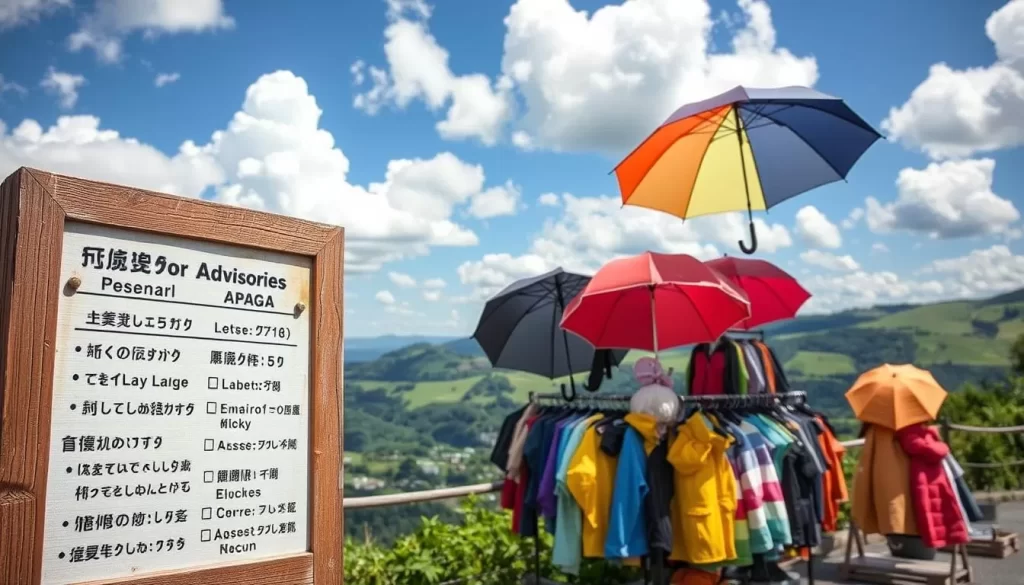
Conclusion
The ever-changing seasons in Saga Prefecture make it a destination that can be enjoyed throughout the year. Whether you’re captivated by spring’s cherry blossoms, summer’s vibrant festivals, autumn’s foliage, or winter’s serene landscapes, Saga has something to offer. Understanding the weather and key events helps you plan a trip that matches your interests. With mild winters and pleasant spring and autumn seasons, the best time to visit is often considered mid-April to early May and October to November. Plan your visit Japan trip wisely to make the most of your time.
The above is subject to change.
Check back often to TRAVEL.COM for the latest travel tips and deals.
